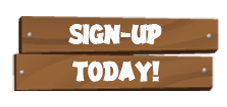 Earlier today I posted a quick video about using the ds106 assignments repository to create engagement in an online learning experience. To be clear there are many things that go into such an experience, but I’ve found the ds106 assignment repository has allowed me to re-think ds106 over the last year and a half. The ability to syndicate filtered assignment posts, rate the difficulty level, relate tutorials, and create new assignments puts the course in the unique position to allow students to shape the experience. The simple act that has proven powerful, fun, and created a sense of community.
Earlier today I posted a quick video about using the ds106 assignments repository to create engagement in an online learning experience. To be clear there are many things that go into such an experience, but I’ve found the ds106 assignment repository has allowed me to re-think ds106 over the last year and a half. The ability to syndicate filtered assignment posts, rate the difficulty level, relate tutorials, and create new assignments puts the course in the unique position to allow students to shape the experience. The simple act that has proven powerful, fun, and created a sense of community.
The current state of the assignment repository came out of an experimental model Martha Burtis has been iterating on since December 2010. It’s pretty amazing because that was the beginning of the idea of ds106 as open architecture, a space that others can build sites onto, like Alan Levine’s Remix site, Tim Owens’ Daily Create, and Linda McKenna and Rachel McGuirk’s Inspire site.
What’s more, when you think about MOOCs, and ds106 more specifically—which isn’t all that MOOCy—Martha is rarely mentioned. Credit is a tricky thing, and I think Martha would be the last person to really care about all that. That said, she was in Spring 2011 building and teaching an open online course that would be massive in its conception 
Soon after I became director of DTLT I’ve depended on Martha for advice, guidance, and direction—and she regularly abides. She shares her vast experience freely despite the fact she doesn’t get credit for her work as director of DTLT from 2006 to 2008, her seminal role in ds106 (she made the Summer of Oblivion; I failed the Magic MacGuffin), her deft WordPress coding skills, and her strategic acumen that has kept DTLT relevant and on the edge for years she refuses to be phased. She’s been the organizational and strategic mind running DTLT , and her leadership has been all too often overlooked. So here is a little know secret about the truth on the ground here at DTLT: Martha Burtis is the brains of the organization.
Just the other day while we were figuring out how to help UMW’s current Quality Enhancement Plan (a.k.a. QEP) figure out why they were going to pay a contractor way too much money to transform pre-packaged content in to three online modules (not sure how this idea emerged) covering speaking, writing, and library search skills respectively. The pre-fabricated modules would have a definitive lifespan, there would be no space for iteration, and it would ultimately be resources wasted. Within 10 minutes Martha adeptly refocused the conversation to experimenting with a publishing platform. And rather than rushing to get everything done as soon as possible, we test out one or two individual “lessons” online to see what works. Once we learn how faculty use this in their curriculum, and what would be most useful going forward we’ll make recommendations for developing a platform over the Summer. Hopefully that will be something we can build out from WordPress or MediaWiki or some other similar application, adding to the open ecosystem of options. That’s exactly how you want to run a meeting like this. This is the best possible outcome: experimentation, iteration, and open. Thanks to Martha (and Jerry after her) DTLT has been doing that for years, but this is only just a little of the credit she never gets. I guess we have to start somewhere.















